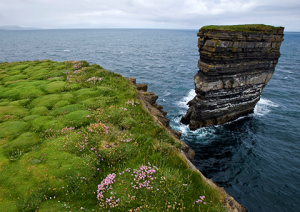If you are planning a trip to County Mayo this summer, here are some facts so you can get familiar before you arrive. County Mayo, Ireland’s third largest county, has a rich and fascinating history and here are some facts:
- The name comes from the Irish “Mhaigh Eo.”
Mhaigh Eo is translated as the “Plain of the Yew Tree,” which comes from the village of Mayo, now known as the Mayo Abbey. This tree is one of several pine trees native to Ireland.

- The term “boycott” comes from Co. Mayo.
The word ‘boycott’ is taken from the name of Captain Charles C. Boycott, an agent for English landowner of the 19th century, Lord Erne. Boycott was ignored and ostracized by the local community of Ballinrobe during the Irish Land War as part of a campaign to overthrow the Irish Land League.
- Mayo is the birthplace of one of the most fearsome pirates of Ireland.
The Pirate Queen (about 1530-1603) is Grace O’Malley of the famous O’Malley clan from Mayo. Her father was a marine merchant and chief, so she learned all she needed to growing up on his boats. Don’t forget your loot of Irish souvenirs like Aran Sweaters at a site like https://www.shamrockgift.com/aran-sweaters

- Both the pilgrimage site of Ireland’s most famous is in Co Mayo.
Knock Shrine is a national temple and Catholic pilgrimage site. In 1879, some local residents claimed to have observed the appearance of the Blessed Virgin Mary, Saint Joseph, John the Evangelist, angels, and Jesus Christ.
Croagh Patrick (Cruach Phádraig, which means “St. Patrick’s Stack”) is a mountain 2,507 feet high and is an important pilgrimage site in County Mayo. This mountain is a destination for pilgrim climbers every year on Reek Sunday, which is the last Sunday of July.
